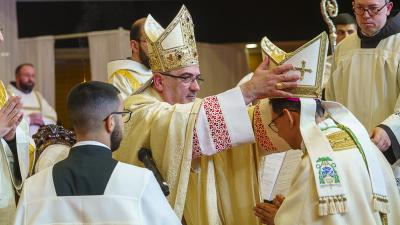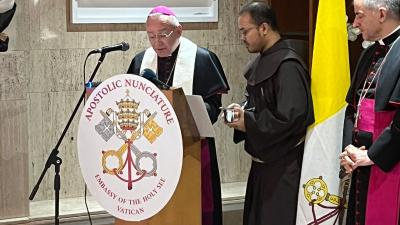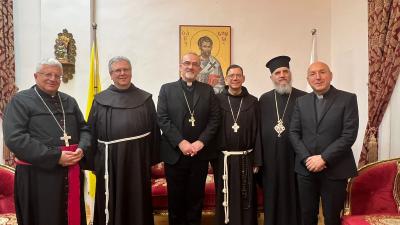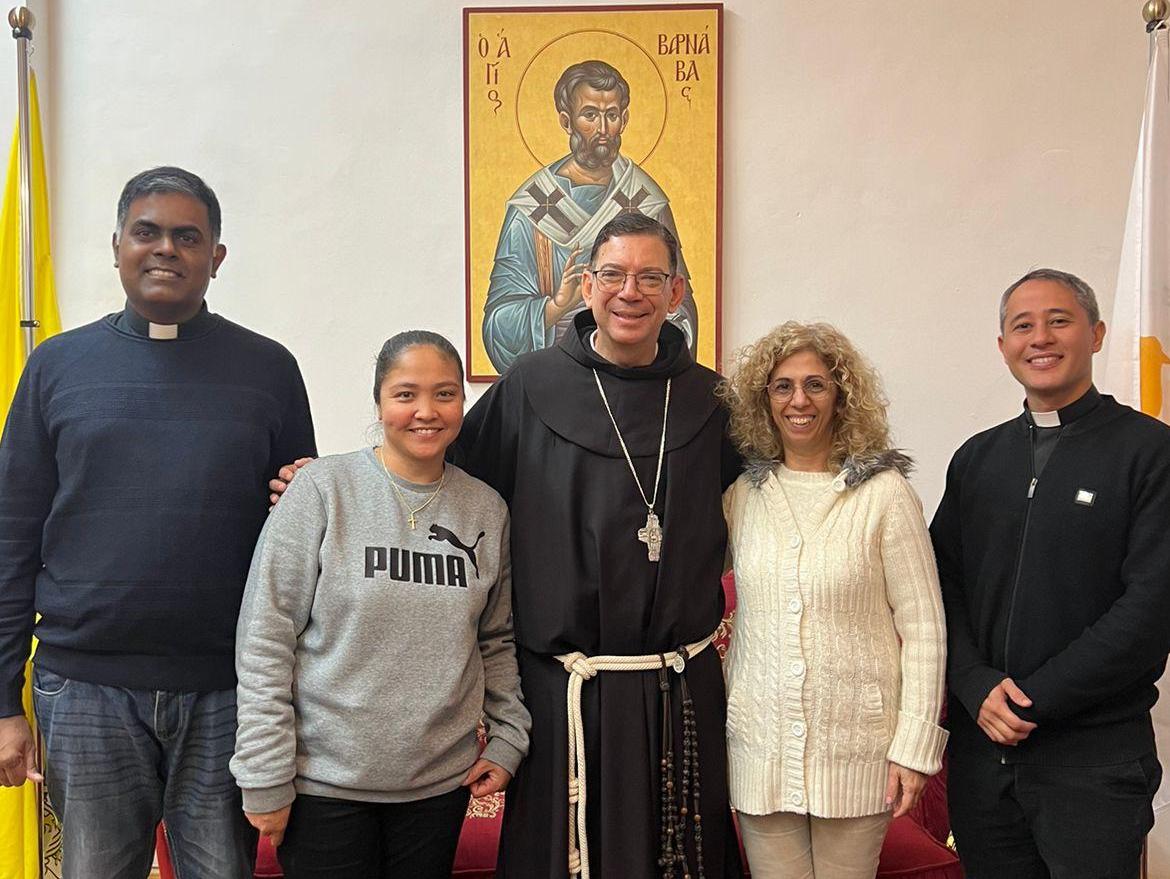
The words of the Virgin Mary to the Angel, “Secundum verbum tuum” (according to your word) are those chosen by fra Bruno Varriano, the new Auxiliary Bishop of the Latin Patriarchate of Jerusalem, as his episcopal motto and as the programme of his service. They are the same words that emerged in his soul when he said “Yes” to the appointment as bishop. This is how he describes that moment: “After nine years at the school of Nazareth I could not say “No” to God’s project. I could have said ‘No? to my project, looking at my limits. I said ‘Yes’ to a project which is not mine. The Virgin Mary taught me that” and “so di St Joseph, who took on to himself all the responsibility for God’s project, in a concrete way.”
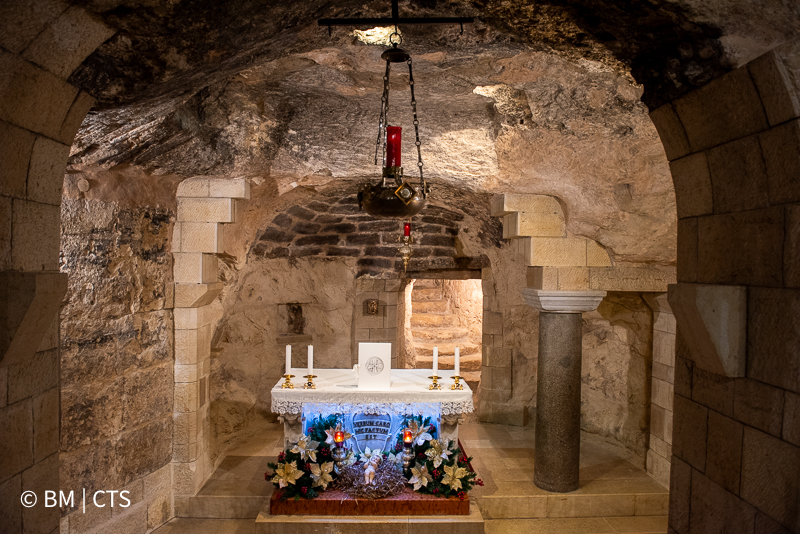
A friar of the Custody of the Holy Land, fra Bruno has exercised his ministry in Cyprus for a little over a year, as the vicar of the Latin Patriarchate of Jerusalem. On 16 March next, he will be ordained Bishop in Nicosia and the following day he will celebrate his first Pontifical Mass. Je will continue to exercise his ministry in Cyprus, where there are multiple challenges: occupied territory, immigration and refugees. The Latin Church is beginning to have a face of its own here and the appointment of Father Bruno brings a bishop back to the island after 400 years.
A disciple of Jesus
In the interview he gave to the website of the Custody of the Holy Land, he talks about what his “style” will be and how he feels about the call to the episcopate. In the first place, as a disciple. “Nobody becomes a friar or a priest to become a bishop. You enter the religious life to become a disciple of Jesus and following Jesus we are all disciples,” he says. As a bishop as well, “I can teach only what I draw from my life as a disciple.” This is the influence that he has tried to convey in this year in Cyprus: “I came to walk with my flock of the Latin Church, as well as with my brothers in the Maronite and Orthodox Churches”. And he quotes the passage from John 21: “Feed my lambs.” “He says ‘my’ : the lambs do not belong to the bishop or to the priest, it is Jesus’s flock that I lead.”
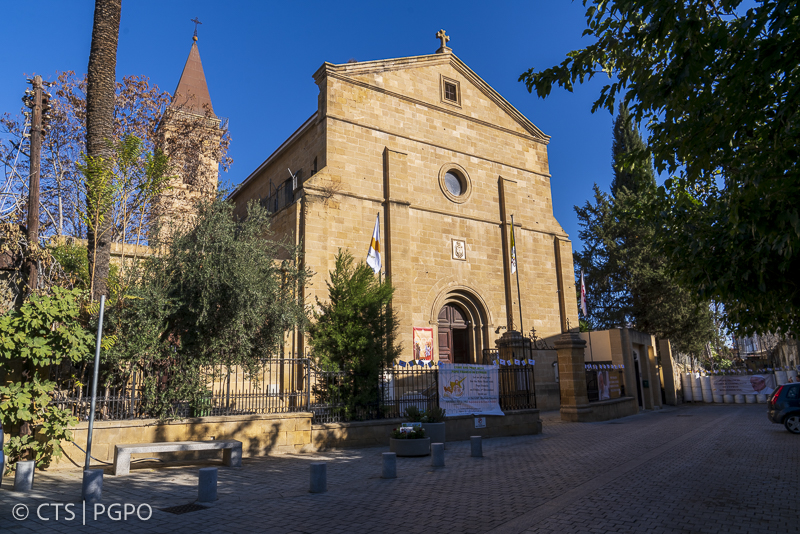
Bishop, Franciscan, Minor
A disciple and a Franciscan. A Friar Minor for 25 years, fra Bruno brings the charism of St Francis as a gift to the Church of Cyprus and to the Universal Church. “As a bishop,” he states, “I will always be a Friar Minor. This charism of minority goes through the preference for the Word, for the Eucharist, for priests and for the poor. This has already marked me in this year.” His eyes shine when he speaks about his weekly visits to the refugee camp of Pournara, which he hopes to continue even as bishop. “We have created a pastoral group for the refugees; we have activities for everyone and celebrate Mass for the Christians. When I am there, I identify myself with the condition of being a pilgrim and a stranger, as St Francis wanted. Those people teach this to me. We try to help them at a material level as well, but for me, being in the camp is above all finding my vocation again. Being in the ‘outskirts’ of Cyprus – in the camp, in the prison, in the occupied territory and in the situation of the people hurt by the division, makes me discover my identity as a Friar Minor once again.”
Beyond the wall
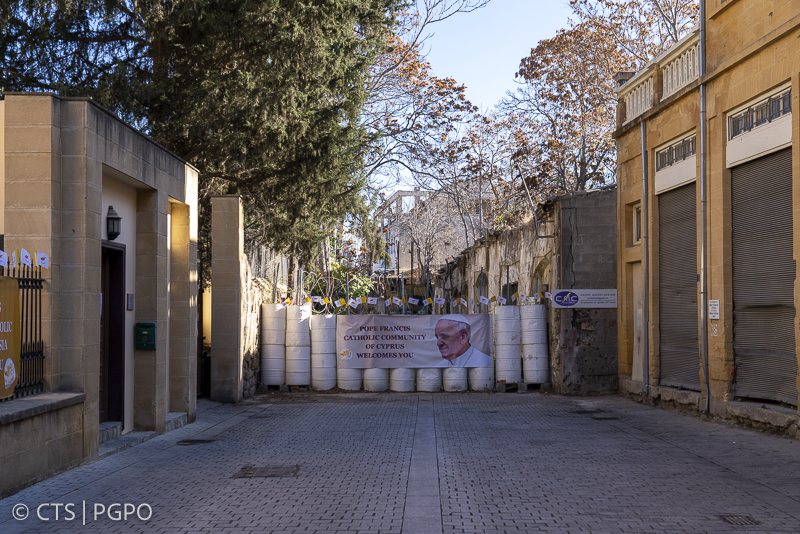
Fra Bruno has lived in the Holy Land for almost all his religious life. He was in Bethlehem at the time of the assault on the Basilica of the Nativity, and when the building of the wall of separation between Israel and the Palestinian Territories began. “I arrived in Cyprus and here too I found a wall – the residence is a few dozen yards from the buffer zone. I said to myself that the wall must not be a limit for me and for the Church of Cyprus. It is a situation that cannot be erased, but which must make us be on both sides, because we have communities in the northern part of Cyprus as well: the largest is in Nicosia, just on the other side of the wall - with up to 600 faithful at Christmas and Easter Masses, the smaller communities are in Kyrenia, Famagosta and the European University of Lefke. “At the moment we guarantee a presence for the celebrations but we have to work out a more stable way of being present,” possibly following the model of the Orthodox and of the Maronites, who already have some priests in their community in the north of the island.
Crossroads

In the southern part, there are more than 35,000 Latin Catholics and they live in an increasingly varied situation. If Cyprus has always been a crossroads of peoples and cultures due to its strategic position in the Mediterranean, it has now become a point of arrival for many migrants. In addition to a small (but lively) nucleus of Cypriot Catholics, the vast majority of the Latin community is made up of immigrants from the Philippines, Sri Lanka - “we have had a fidei donum priest for one month” - India, Africa (especially the French-speaking countries) and Europeans from various countries. The main challenges include family pastoral care. Here too, as in the whole of the Holy Land, marriages between Christians of different confessions are the normality. What’s more, due to the great pressure of migration, the number of marriages between people of different religions is growing. “We have set up a Commission for family pastoral care, together with the Maronite Church. It’s not only a question of giving permission, but also of accompanying these families, these people.” Relations with the other Churches are more than cordial: “I have received a lot of affection and welcome from the Orthodox Church,” fra Bruno says. “There is a concrete friendship with Archbishop Georgios and with some bishops, such as Archbishop Porphyrios and the Metropolitan Vasilios, who also gave a church to the Latin community. There are very fraternal relations with the other confessions, and a lovely collaboration with the Maronite Catholics. We walk together and the people can also see this.”
Marinella Bandini





